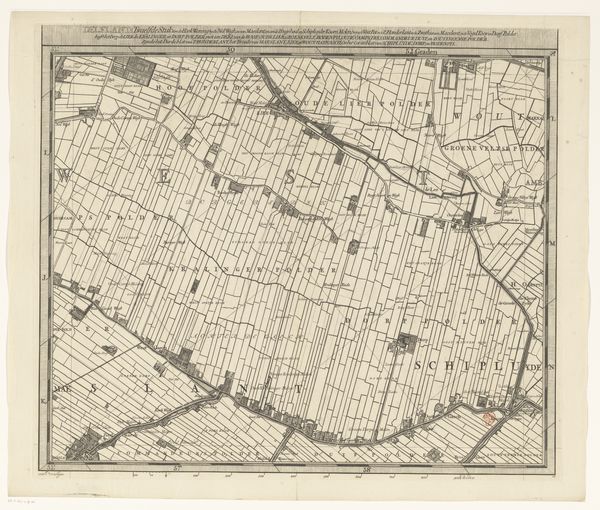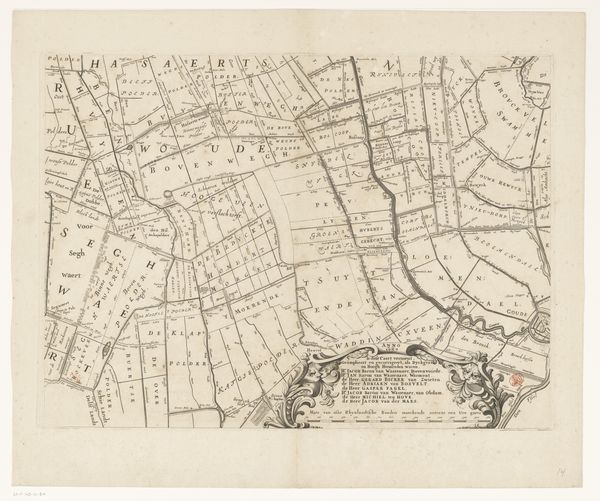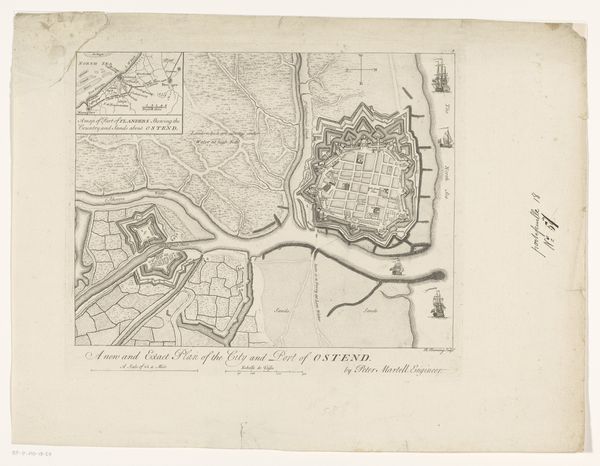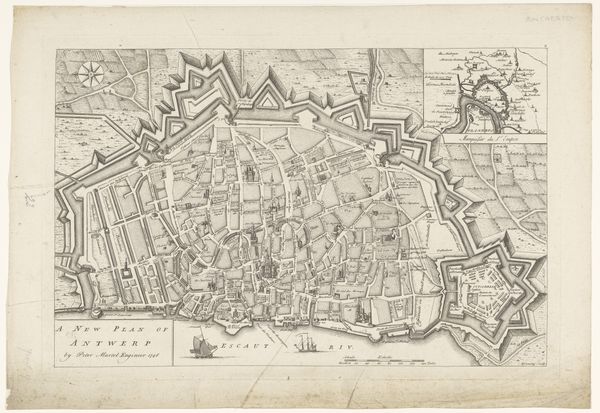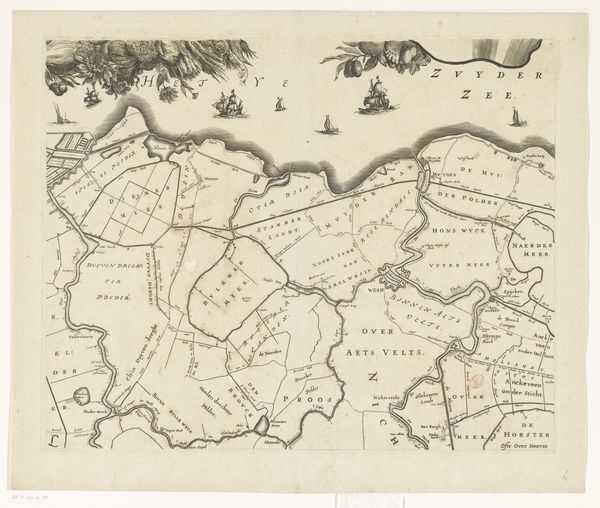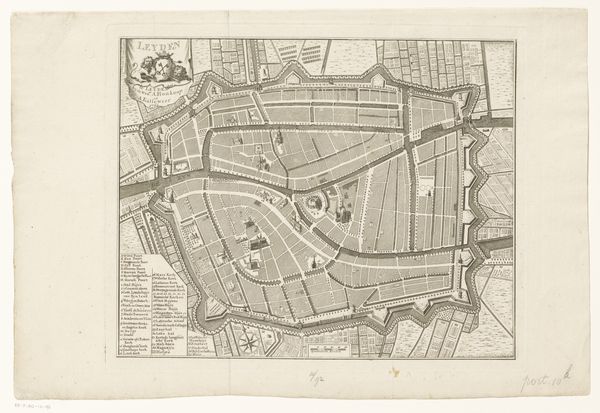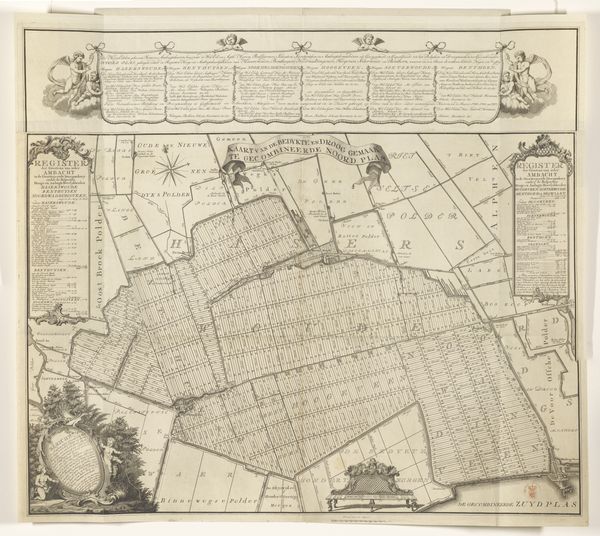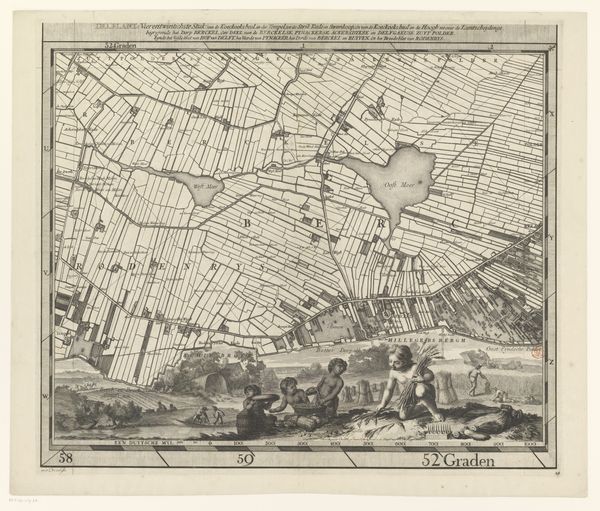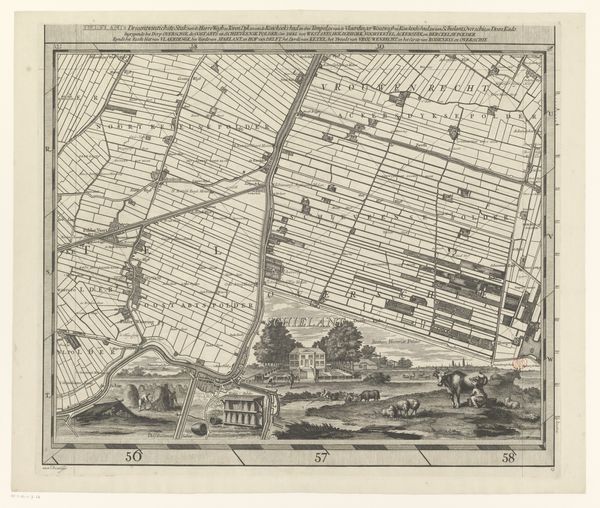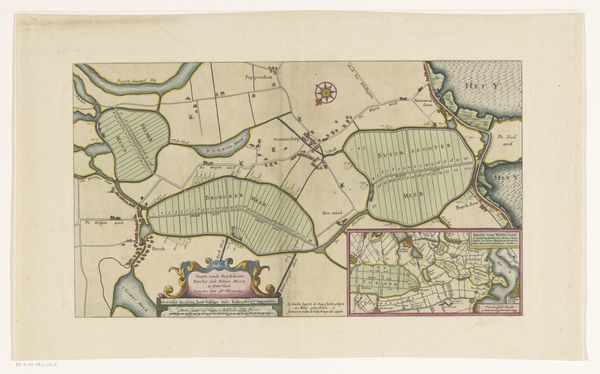
print, etching, engraving
#
dutch-golden-age
# print
#
etching
#
landscape
#
etching
#
engraving
Dimensions: height 635 mm, width 912 mm
Copyright: Rijks Museum: Open Domain
Editor: Here we have an anonymous etching and engraving, "Kaart van Loenen en omstreken," dating from around 1726 to 1737. It’s incredibly detailed, and seems to depict land ownership. What social dynamics might be at play in this seemingly simple map? Curator: An excellent question. Consider the period: the Dutch Golden Age was built on global trade and colonial exploitation. Land ownership, as visualized here, reflects a very specific power structure. Who had access to mapping technology? Who commissioned these maps, and what did it mean for those excluded from the visual representation? Editor: So the map isn't just about geography, it’s a statement about power? Curator: Precisely. Maps aren’t neutral. They reflect the worldview of the cartographer and the society that produces them. Consider the visual hierarchies within the map itself. What is emphasized, and what is omitted? These choices reflect an ideology. Who benefits from this specific representation of Loenen? Whose narratives are silenced? Editor: I see your point. The intricate detail afforded to the land holdings contrasts sharply with, say, any representation of the people who worked the land. Curator: Exactly. Maps can serve as tools for legitimizing control and ownership, particularly within colonial contexts. It invites us to question the relationship between knowledge, representation, and social justice. We need to analyze the history behind the map. This artwork provides space to think of intersectional topics like colonialism, identity, and the gaze. What do you make of it now? Editor: I had initially approached the map as just that, but now, it’s clearly a document embedded in a specific social order. I now think about those left off of this map and those historical moments of omission. Curator: I agree. Seeing these historical images requires approaching them from a contemporary social and political perspective, revealing hidden systems of power and inequity. It certainly has changed my perspective.
Comments
No comments
Be the first to comment and join the conversation on the ultimate creative platform.
